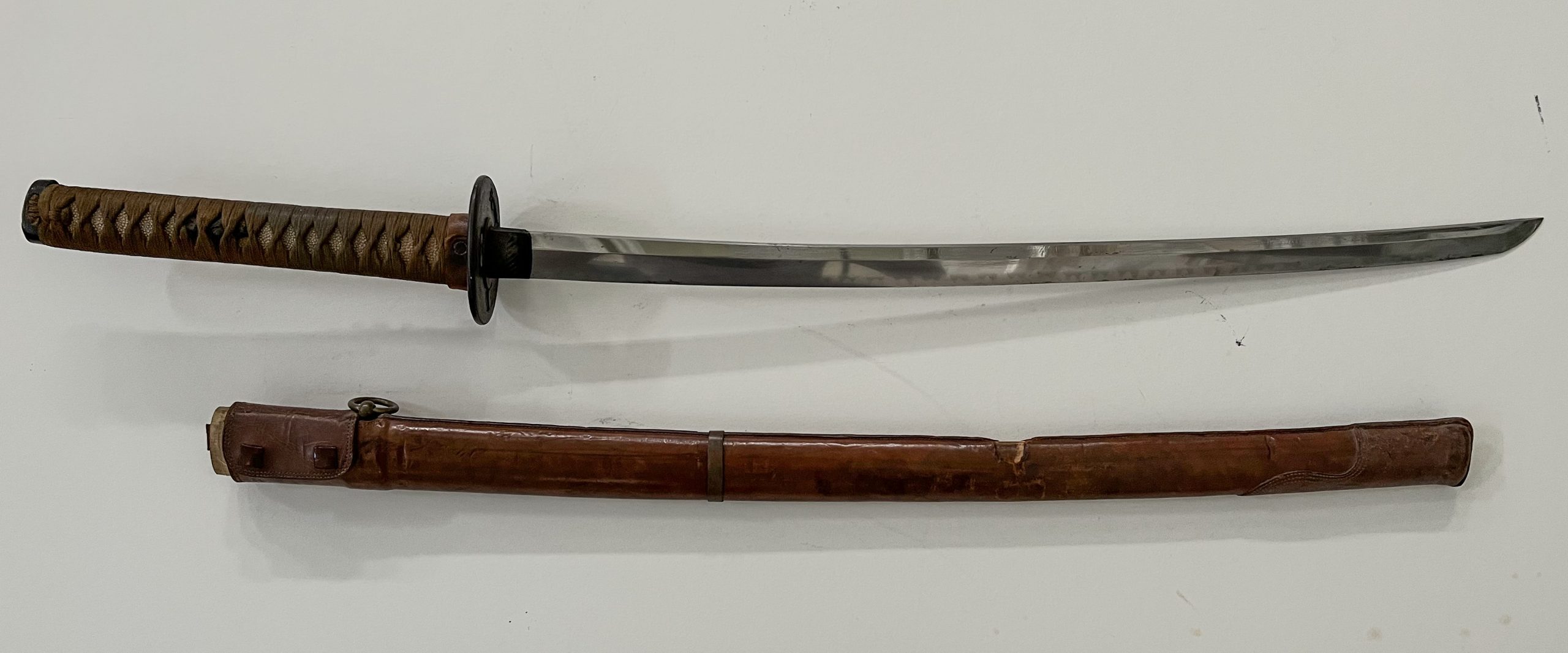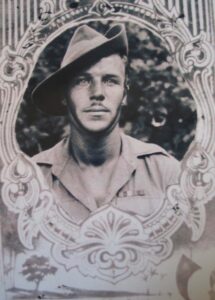A Gunto Japanese Ceremonial Sword

Japanese sword with bound handle in a brown leather scabbard, presented to Arthur Quainton during WWII with a certificate of ownership.
These swords were made for the Imperial Japanese army and navy from 1872 when conscription was introduced. In WWII, all Japanese soldiers were required to wear a sword. In January 1942 the Japanese invaded Burma, (now called Myanmar) with a small army consisting of only 35,000 men. The UK formed an alliance with Burma and their allies against the Japanese, and after a long and vicious campaign, the Japanese finally surrendered. It was a requirement that all Japanese forces remaining in Burma formally surrendered at a ceremony. As a consequence, all Japanese swords and other military equipment were handed over to the allies and Burmese forces, which is how this Gunto sword was passed on to Arthur Quainton, a Company Sergeant Major from the First Battalion in the Northamptonshire regiment.
The Japanese sword in the museum comes with a certificate belonging to Arthur Quainton which reads: “This is to certify that the above mentioned who has been presented with a Japanese sword has permission to retain same as a war souvenir.”
This verifies the provenance of the sword, that it does in fact come from the Burma campaign, and that Arthur Quainton definitely was handed the sword by a Japanese soldier in the sword ceremony.

The sword can be found in the Main Gallery in Case 6.
The research on this sword was carried out by Lydia, while she was volunteering at Thame Museum as part of her Duke of Edinburgh bronze award
